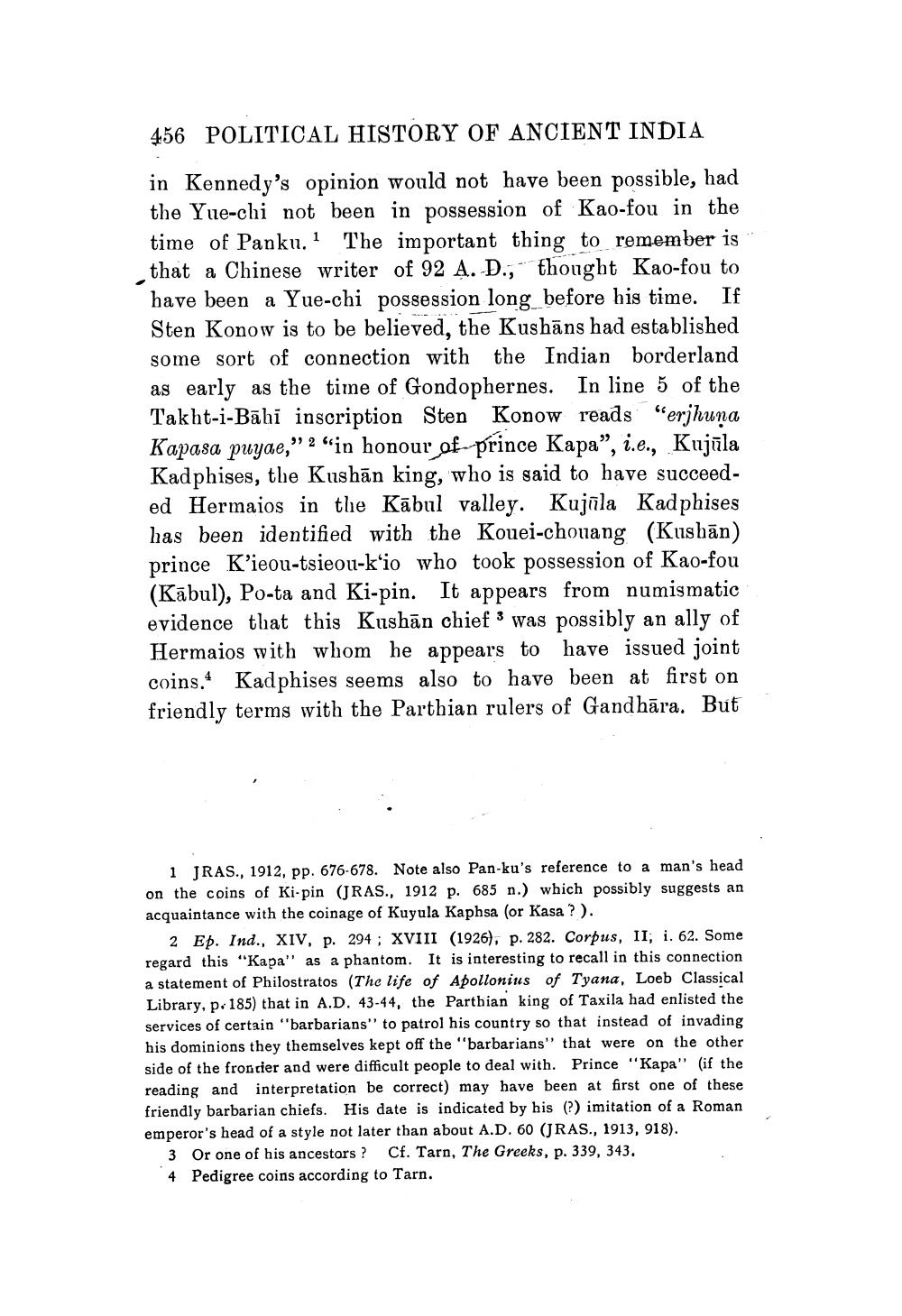________________
456 POLITICAL HISTORY OF ANCIENT INDIA
in Kennedy's opinion would not have been possible, had the Yue-chi not been in possession of Kao-fou in the time of Panku. 1 The important thing to remember is that a Chinese writer of 92 A. D., thought Kao-fou to have been a Yue-chi possession long before his time. If Sten Konow is to be believed, the Kushans had established some sort of connection with the Indian borderland as early as the time of Gondophernes. In line 5 of the Takht-i-Bahi inscription Sten Konow reads "erjhuna Kapasa puyae, ,"2 "in honour of-prince Kapa", i.e., Kujula Kadphises, the Kushan king, who is said to have succeeded Hermaios in the Kabul valley. Kujula Kadphises has been identified with the Kouei-chouang (Kushan) prince K'ieou-tsieou-k'io who took possession of Kao-fou (Kabul), Po-ta and Ki-pin. It appears from numismatic evidence that this Kushan chief was possibly an ally of Hermaios with whom he appears to have issued joint coins. Kadphises seems also to have been at first on friendly terms with the Parthian rulers of Gandhara. But
3
1 JRAS., 1912, pp. 676-678. Note also Pan-ku's reference to a man's head. on the coins of Ki-pin (JRAS., 1912 p. 685 n.) which possibly suggests an acquaintance with the coinage of Kuyula Kaphsa (or Kasa?).
2 Ep. Ind., XIV, p. 294; XVIII (1926), p. 282. Corpus, II, i. 62. Some regard this "Kapa" as a phantom. It is interesting to recall in this connection a statement of Philostratos (The life of Apollonius of Tyana, Loeb Classical Library, p. 185) that in A.D. 43-44, the Parthian king of Taxila had enlisted the services of certain "barbarians" to patrol his country so that instead of invading his dominions they themselves kept off the "barbarians" that were on the other side of the frontier and were difficult people to deal with. Prince "Kapa" (if the reading and interpretation be correct) may have been at first one of these friendly barbarian chiefs. His date is indicated by his (?) imitation of a Roman emperor's head of a style not later than about A.D. 60 (JRAS., 1913, 918).
3 Or one of his ancestors? Cf. Tarn, The Greeks, p. 339, 343. 4 Pedigree coins according to Tarn.




